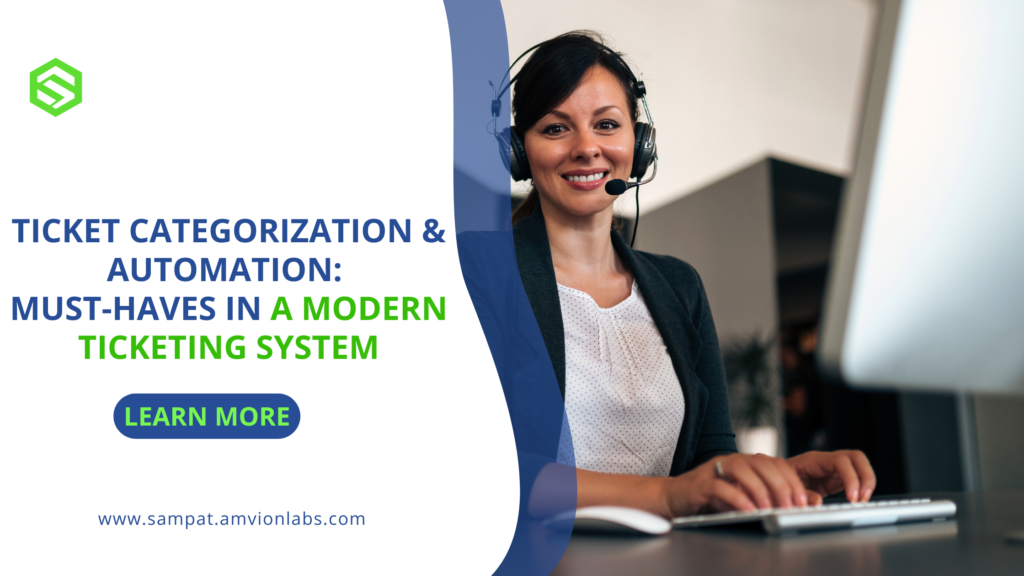
Ticket Categorization & Automation: Must-Haves in a Modern Ticketing System
Modern businesses can’t afford to be slow, especially when it comes to resolving customer or internal IT issues. When a support request arrives, the clock starts ticking—and your team’s response time can directly impact customer satisfaction, productivity, and even revenue.
This is exactly why ticket categorization and automation are no longer optional—they’re the foundation of an effective help desk.
What Is Ticket Categorization—and Why It Matters
Think about entering a library where every book is scattered without titles or sections—it’d be nearly impossible to find what you need. Finding a book would take forever, right? That’s exactly what happens in support systems where incoming tickets are unclassified.
Ticket categorization is the process of assigning a label or type to each support request so it can be handled more efficiently. Think of it as sorting tickets into neatly labeled bins like:
- Hardware issues
- Network problems
- Software bugs
- Password resets
- Billing queries
- Feature requests
Each category tells the help desk team:
- What type of issue it is
- How urgent it might be
- Who is best suited to resolve it
- Whether there are recurring issues in that area
Categorization might seem basic, but it’s actually a strategic enabler that unlocks better prioritization, smarter routing, and deeper analytics.
Types of Ticket Categories
Different organizations may use different category structures, but here are a few commonly used ticket category types:
- Based on Issue Type
- Hardware (printers, laptops, monitors)
- Software (application errors, installation)
- Access (login, permissions)
- Connectivity (network, VPN, Wi-Fi)
- Based on Department
- IT
- HR
- Finance
- Facilities
- Based on Customer Needs
- Information request
- Technical help
- Complaint
- Feedback
Having well-defined categories ensures that your support team isn’t wasting time guessing what the ticket is about—and instead can move into resolution mode quickly.
What Happens Without Categorization?
Without a defined categorization system, your help desk will likely:
- Assign tickets to the wrong team
- Waste time routing and re-routing
- Fail to identify recurring issues
- Have poor SLA performance
- Deliver a frustrating user experience
Why Automation is Your Help Desk’s Secret Weapon
While categorization lays the groundwork, automation builds the highway.
Automation ensures that once a ticket is categorized:
- The system instantly directs the ticket to the appropriate team or specialist without manual intervention. Priority is set based on business impact or SLA
- Escalations happen seamlessly when there’s a delay
- Notifications keep users and agents in the loop
This removes the need for manual triage and avoids the bottleneck of “who handles what?”
Thanks to AI and ML, advanced systems can even predict the category based on ticket content and route accordingly—reducing human error and speeding up the resolution.
Check out how our platform supports smart routing and automation in our Ticket Management System.
How It All Comes Together: Categorization + Automation
Individually, categorization and automation improve your help desk. But together? They create a well-oiled support engine.
Here’s what that looks like:
Support requests can come in via email, live chat, or an online form, depending on the user’s preference.
The ticketing system reads the ticket content
It categorizes the issue based on keywords and past behavior
Automatically routes it to the right team with proper priority
Sends an acknowledgment to the user
Sets a timer for SLA compliance
Escalates the ticket if no action is taken within a specific timeframe
Collects analytics on common issue types, agent performance, and user satisfaction
This kind of streamlined, data-driven workflow is what separates traditional help desks from modern, proactive support systems.
The Bigger Picture: Data and Decision-Making
With ticket categorization and automation in place, you can generate powerful insights such as:
- What issues are most common?
- Which departments are overwhelmed?
- Where are bottlenecks forming?
- How well are SLAs being met?
This data can help leadership make better decisions around staffing, training, and process improvement.
A Smarter System Starts with the Right Platform
If you’re still managing support tickets with spreadsheets, email threads, or a basic system that lacks categorization and automation—you’re holding your team back.
Platforms like SAMPAT Ticket Management System are designed to help businesses scale their support operations with built-in workflows, smart categorization, AI-powered auto-assignment, and SLA tracking.
It’s time to move from firefighting mode to a system that’s strategic, scalable, and intelligent.
Final Thoughts
The modern help desk isn’t about reacting to issues—it’s about anticipating and resolving them quickly. By implementing smart ticket categorization and automation workflows, you can:
- Boost agent productivity
- Meet SLAs with confidence
- Deliver a better customer experience
- Uncover patterns that improve long-term service delivery
In the end, it’s not just about tickets—it’s about building trust, speed, and efficiency into your support operations.


